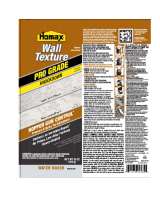
biochemical demand (BOD5 is 1.16 p/p. 20-Day biochemical oxygen demand
(BOD20 is 1.45 p/p. Theoretical oxygen demand (thOD) is calculated to be 1.68
p/p. Inhibitory concentration (IC50) in OECD Activated Sludge Respiration
Inhibition /Test (OECD Test 209) is greater than 1 gm/L. Degradation is expected
in atmospheric environment within minutes to hours.
Ecotoxicity: Based largely or completely in information for similar material (S), I.E.
propylene glycol. Material is practically non-toxic to aquatic organisms on an acute
basis. (LC50 greater than 100 mg/L in most sensitive species.)
Acute LC50 for fathead minnow (Pimephales promelas) is 46500-54900 mg/L.
Acute LC50 for guppy (Poecilia reticulate) is greater than 1000 mg/L.
Acute LC50 for water flea (Daphnia magna) is 4850-34400 mg\L.
Acute LC50 for rainbow trout (Oncorhynchus mykiss) is 44 mL/L (about 44000
mg/L.
(See section 15 for Regulatory Information.)
13. Disposal Considerations
Disposal: DO NOT DUMP INTO ANY SEWERS, ON THE GROUND, OR INTO ANY
BODY OF WATER. All disposal methods must be in compliance with all Federal,
State/Provincial and local laws and regulations. Regulations may vary in different
locations. Waste characterizations and compliance laws are the responsibility
solely of the waste generator. ALLAN CHEMICAL CORPORATION HAS NO
CONTROL OVER THE MANAGEMENT PRACTICES OR MANUFACTURING PROCESSES
OF PARTIES HANDLING OR USING THIS MATERIAL. THE INFORMATION
PRESENTED HERE PERTAINS ONLY TO THE PRODUCT AS SHIPPED IN ITS
INTENDED CONDITION AS DESCRIBED IN MSDS SECTION 2
(Composition/Information On Ingredients)
FOR USED & UNCONTAMINATED PRODUCT, the preferred options include sending
to a licensed, permitted: recycler, reclaimer, incinerator, and wastewater
treatment system.
DEPARTMENT OF TRANSPORTATION: This product is not regulated by D.O.T. when
shipped by land.
14. Transport Information
CANADIAN TDG INFORMATION: For TDG regulatory information, if required,
consult transportation regulations and product shipping papers.
(Not meant to be all-inclusive—selected regulations represented)
15. Regulatory Information
Effective Date: November 2003
NOTICE: The information herein is presented in good faith and believed to be
accurate as of the effective date shown above. However, no warranty, express or
implied is given. Regulatory requirements are subject to change and may differ






